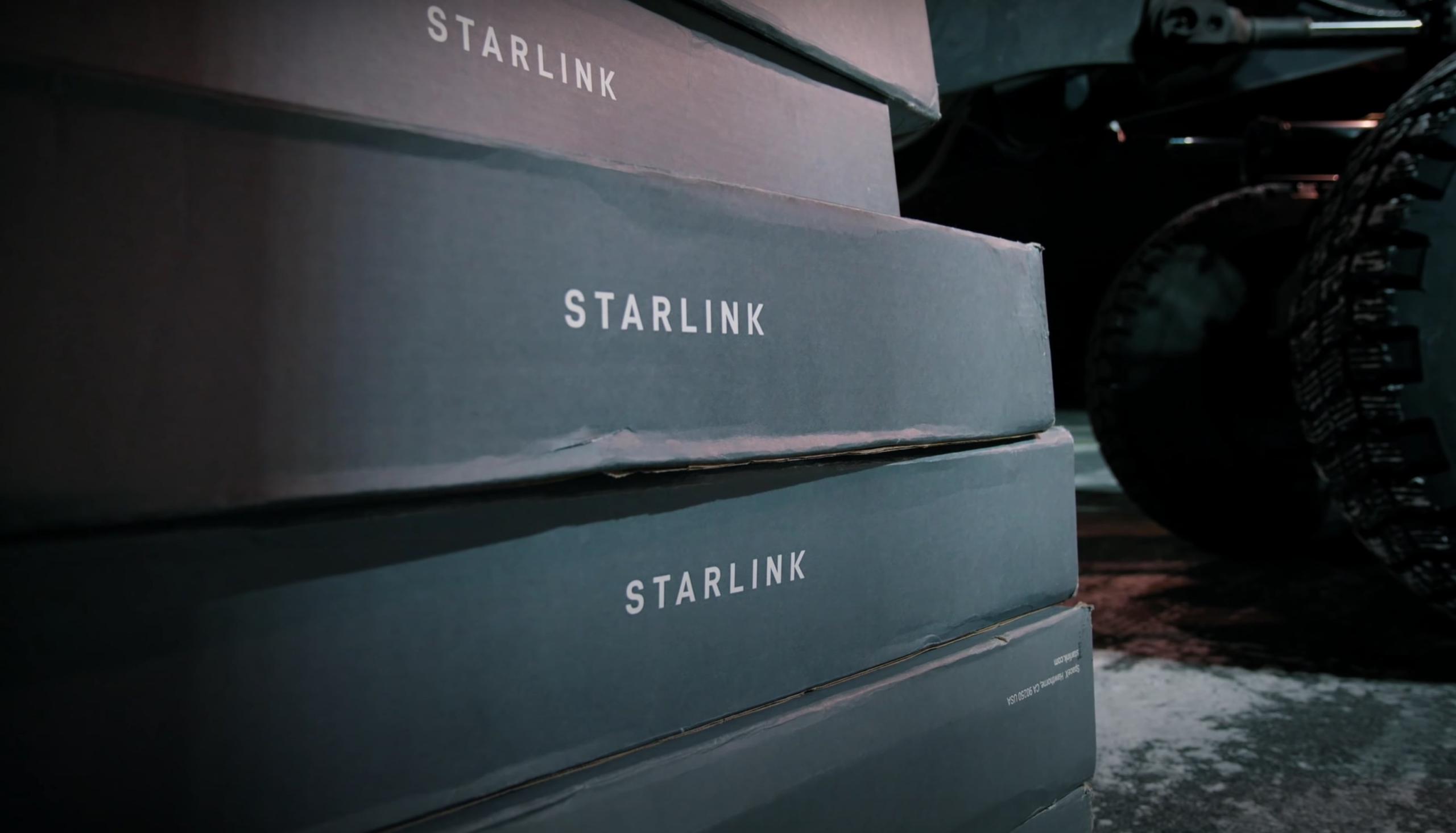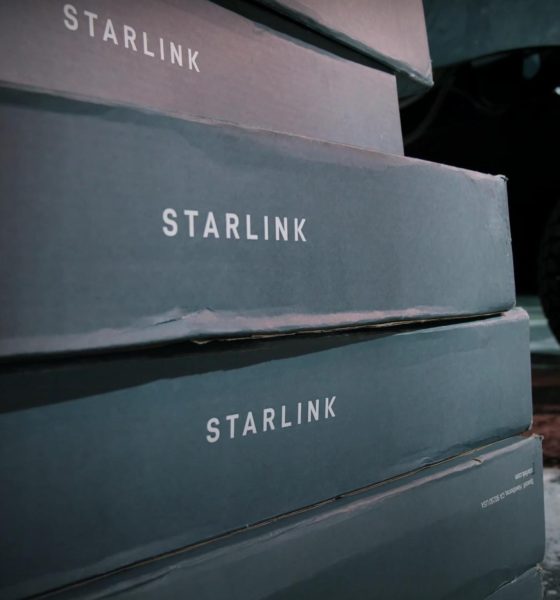

News
Elon Musk’s Starlink faces opposition over ‘electromagnetic wave’ concerns
Elon Musk’s Starlink system is designed to bring the internet to the farthest reaches of the globe, and so far, it’s off to a great start. Starlink beta users currently residing in rural areas in the United States have praised the satellite-based system, noting that it is superior to alternatives presently available on the market. For some residents in France, however, the idea of Starlink is worth resisting.
To accomplish its worldwide internet connectivity goals, SpaceX needs to build a network of ground stations that link Starlink’s satellites to the internet’s physical backbone. Among the locations proposed for such a station is Saint-Senier-de-Beuvron, a village in France located less than 12 miles (20km) from the Mont Saint-Michel World Heritage Site. The area only has about 350 residents, but they have voiced their opposition to the Starlink site.
In a statement to the Agence France-Presse (AFP), Francois Dufour, a retired farmer and Greens council member, argued that the facility might present risks for residents in the area. The Greens council member argued that the dangers of factors such as electromagnetic waves are something that residents have experienced in the past.
“The risks from electromagnetic waves is something we’ve already seen with high-voltage power lines, which have disturbed lots of farmers in the area. Social networks, internet – they already exist. Why do we need to go look for internet on the moon?” Dufour said.
Interestingly enough, some residents seem to have a less negative reception to the Starlink site. Anne-Marie Falguieres, who lives just 60 meters away from the proposed Starlink station, noted that the village simply wants to know of any dangers that the site may pose.
“We’re not attacking Elon Musk. We’re not technophobes. I’m a guide on the bay, I have an internet site, my husband works from home. But these antennas are completely new, at least in France, and we want to know if they’re dangerous or not,” she said.
Saint-Senier-de-Beuvron issued a decree in December to block the construction of a Starlink ground site, despite the station already receiving regulatory approval from France’s national radio frequency agency, ANFR. As noted in a report from The Independent, however, the refusal was based on a technicality, which SpaceX’s contractor, Sipartech, could overturn.
The village’s deputy mayor, Noemie Brault, shared some insights about Saint-Senier-de-Beuvron’s opposition to the Starlink ground site. “This project is totally new. We don’t have any idea of the impact of these signals. As a precaution, the municipal council said no. That worries us because we have no data on the effects of the signal on the health of animals and humans in the long run. And when you hear that he wants to implant a chip in people’s brains, it’s frightening,” she said.
SpaceX has launched over 1,000 of its Starlink satellites, though these are only a fraction of the 42,000 that are planned for the constellation. Elon Musk, for his part, has noted that the Starlink beta currently has over 10,000 users, both in the United States and abroad.
Don’t hesitate to contact us for news tips. Just send a message to tips@teslarati.com to give us a heads up.

News
Tesla FSD fleet is nearing 7 billion total miles, including 2.5 billion city miles
As can be seen on Tesla’s official FSD webpage, vehicles equipped with the system have now navigated over 6.99 billion miles.

Tesla’s Full Self-Driving (Supervised) fleet is closing in on almost 7 billion total miles driven, as per data posted by the company on its official FSD webpage.
These figures hint at the massive scale of data fueling Tesla’s rapid FSD improvements, which have been quite notable as of late.
FSD mileage milestones
As can be seen on Tesla’s official FSD webpage, vehicles equipped with the system have now navigated over 6.99 billion miles. Tesla owner and avid FSD tester Whole Mars Catalog also shared a screenshot indicating that from the nearly 7 billion miles traveled by the FSD fleet, more than 2.5 billion miles were driven inside cities.
City miles are particularly valuable for complex urban scenarios like unprotected turns, pedestrian interactions, and traffic lights. This is also the difference-maker for FSD, as only complex solutions, such as Waymo’s self-driving taxis, operate similarly on inner-city streets. And even then, incidents such as the San Francisco blackouts have proven challenging for sensor-rich vehicles like Waymos.
Tesla’s data edge
Tesla has a number of advantages in the autonomous vehicle sector, one of which is the size of its fleet and the number of vehicles training FSD on real-world roads. Tesla’s nearly 7 billion FSD miles then allow the company to roll out updates that make its vehicles behave like they are being driven by experienced drivers, even if they are operating on their own.
So notable are Tesla’s improvements to FSD that NVIDIA Director of Robotics Jim Fan, after experiencing FSD v14, noted that the system is the first AI that passes what he described as a “Physical Turing Test.”
“Despite knowing exactly how robot learning works, I still find it magical watching the steering wheel turn by itself. First it feels surreal, next it becomes routine. Then, like the smartphone, taking it away actively hurts. This is how humanity gets rewired and glued to god-like technologies,” Fan wrote in a post on X.
News
Tesla starts showing how FSD will change lives in Europe
Local officials tested the system on narrow country roads and were impressed by FSD’s smooth, human-like driving, with some calling the service a game-changer for everyday life in areas that are far from urban centers.

Tesla has launched Europe’s first public shuttle service using Full Self-Driving (Supervised) in the rural Eifelkreis Bitburg-Prüm region of Germany, demonstrating how the technology can restore independence and mobility for people who struggle with limited transport options.
Local officials tested the system on narrow country roads and were impressed by FSD’s smooth, human-like driving, with some calling the service a game-changer for everyday life in areas that are far from urban centers.
Officials see real impact on rural residents
Arzfeld Mayor Johannes Kuhl and District Administrator Andreas Kruppert personally tested the Tesla shuttle service. This allowed them to see just how well FSD navigated winding lanes and rural roads confidently. Kruppert said, “Autonomous driving sounds like science fiction to many, but we simply see here that it works totally well in rural regions too.” Kuhl, for his part, also noted that FSD “feels like a very experienced driver.”
The pilot complements the area’s “Citizen Bus” program, which provides on-demand rides for elderly residents who can no longer drive themselves. Tesla Europe shared a video of a demonstration of the service, highlighting how FSD gives people their freedom back, even in places where public transport is not as prevalent.
What the Ministry for Economic Affairs and Transport says
Rhineland-Palatinate’s Minister Daniela Schmitt supported the project, praising the collaboration that made this “first of its kind in Europe” possible. As per the ministry, the rural rollout for the service shows FSD’s potential beyond major cities, and it delivers tangible benefits like grocery runs, doctor visits, and social connections for isolated residents.
“Reliable and flexible mobility is especially vital in rural areas. With the launch of a shuttle service using self-driving vehicles (FSD supervised) by Tesla in the Eifelkreis Bitburg-Prüm, an innovative pilot project is now getting underway that complements local community bus services. It is the first project of its kind in Europe.
“The result is a real gain for rural mobility: greater accessibility, more flexibility and tangible benefits for everyday life. A strong signal for innovation, cooperation and future-oriented mobility beyond urban centers,” the ministry wrote in a LinkedIn post.
News
Tesla China quietly posts Robotaxi-related job listing
Tesla China is currently seeking a Low Voltage Electrical Engineer to work on circuit board design for the company’s autonomous vehicles.

Tesla has posted a new job listing in Shanghai explicitly tied to its Robotaxi program, fueling speculation that the company is preparing to launch its dedicated autonomous ride-hailing service in China.
As noted in the listing, Tesla China is currently seeking a Low Voltage Electrical Engineer to work on circuit board design for the company’s autonomous vehicles.
Robotaxi-specific role
The listing, which was shared on social media platform X by industry watcher @tslaming, suggested that Tesla China is looking to fill the role urgently. The job listing itself specifically mentions that the person hired for the role will be working on the Low Voltage Hardware team, which would design the circuit boards that would serve as the nervous system of the Robotaxi.
Key tasks for the role, as indicated in the job listing, include collaboration with PCB layout, firmware, mechanical, program management, and validation teams, among other responsibilities. The role is based in Shanghai.
China Robotaxi launch
China represents a massive potential market for robotaxis, with its dense urban centers and supportive policies in select cities. Tesla has limited permission to roll out FSD in the country, though despite this, its vehicles have been hailed as among the best in the market when it comes to autonomous features. So far, at least, it appears that China supports Tesla’s FSD and Robotaxi rollout.
This was hinted at in November, when Tesla brought the Cybercab to the 8th China International Import Expo (CIIE) in Shanghai, marking the first time that the autonomous two-seater was brought to the Asia-Pacific region. The vehicle, despite not having a release date in China, received a significant amount of interest among the event’s attendees.








